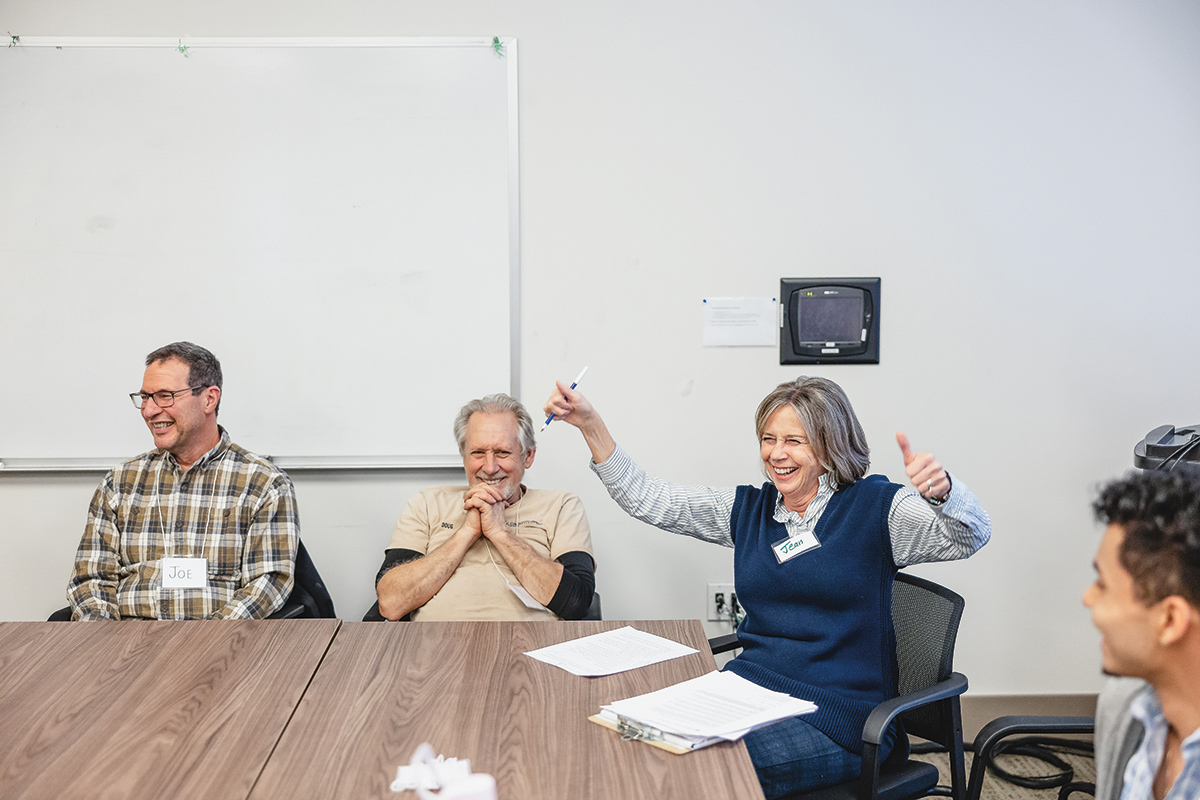lens
Connecting—With and Without Words
Fostering communication and community for people with neurogenic disorders
 Photo by Matt ShifflerJean Nisenboum leads a warm and spirited session of SpeakEasy, a program she co-founded 30 years ago.
Photo by Matt ShifflerJean Nisenboum leads a warm and spirited session of SpeakEasy, a program she co-founded 30 years ago.Every Monday, nearly 35 people come together for a program on the edge of campus, drawn by camaraderie, a compassionate environment and a desire to communicate better as they live with a nervous-system disorder that makes speaking difficult.
For years, many members of this Case Western Reserve University program, known as SpeakEasy, have participated for the education, support and treatment—all at no cost. They have formed lasting bonds, more self-confidence and a deep sense of belonging. The ties are so strong that even after some members die, their spouses continue coming.
"Group members will tell you this is our family," said Jean Nisenboum, an instructor in the graduate communication sciences program in the College of Arts and Sciences. She co-founded SpeakEasy 30 years ago and still leads the sessions. "Everybody in the group understands what everyone has been through and is going through."
SpeakEasy supports adults living with acquired neurogenic communication disorders such as aphasia, which results when parts of the brain are damaged that control language and speech, and apraxia, which impairs intelligibility after a brain injury. The program also has members who have memory struggles resulting from neurogenic diseases.
Nisenboum launched SpeakEasy after noticing a troubling pattern: As a speech-language pathologist, she worked with clients who had limited professional support once they were discharged from traditional therapy. SpeakEasy began as a way to fill that gap and help people continue practicing their verbal and non-verbal communication skills, stay connected to society and not feel so isolated.
"SpeakEasy has made a significant impact with my post-stroke recovery," one member told Nisenboum, who gathered comments for this story. "After five-plus years, I feel more confident and concise in my ability to communicate."
Other members described feeling accepted and proud of improvements they have made.
SpeakEasy also benefits CWRU graduate students who gain clinical training by helping to lead the program.
During one recent two-hour session, members enthusiastically raised their hands to vote on answers to multiple-choice questions posed by Molly McGuire, who is earning a master's degree in speech language pathology.
Some also softly or slowly volunteered short verbal answers to other questions.
During breakout sessions, members worked on their communication skills through activities and games, including bingo and poker. Several SpeakEasy members even meet outside of the sessions to continue playing games.
And for members outside Northeast Ohio, SpeakEasy has a Zoom option on Mondays and a Zoom choir on Fridays.
"Every single Monday, it's just exciting," Nisenboum said, "the energy in the room, the difference we're making—sure. But the difference for our group members from interacting with [other] survivors is so inspiring."





